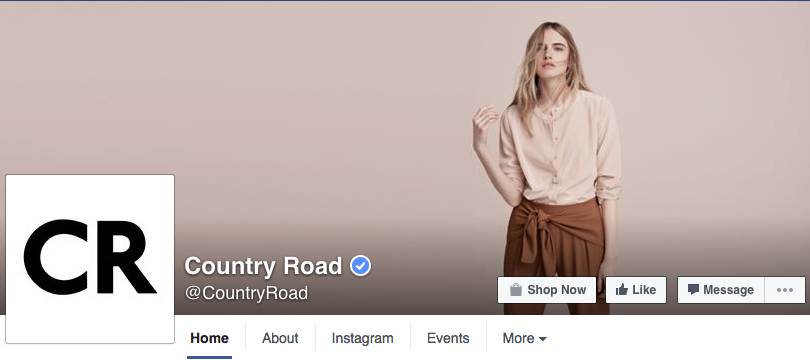Country Road talks catalogues versus Facebook campaigns

As Country Road’s marketing budget increasingly favours digital spend over traditional marketing methods, the role of print catalogues is changing from a sales driver to a branding tool.
According to Paul Conti, marketing manager at Country Road, a recent test discovered while printed catalogues mailed to loyalty customers had an impact on the way people feel about the brand, they didn’t actually drive immediate sales in the same way digital marketing methods do.
“I think there is definitely still a role for the printed catalogue, but the role of it in our mind has changed,” said Conti. “Rather than a tool to make incremental sales from our customers who are the front and centre of our strategy, it’s more about our relationship with our customer, retention and brand love – all of those things that are really important but not directly linked with sales.”
Over the past four to five years, Country Road’s marketing budget has shifted dramatically, to a point where digital now represents the largest share of the budget. Conti said this shift has been driven by the strong ROI of digital campaigns, which allow marketers to directly target segments of its audience.
“We’ve always known anecdotally that our digital ads had a really tangible effect on instore visits and purchases just from feedback from store teams … or from particular products only featured on Facebook or Instagram going from average sales to bestsellers almost overnight,” he said.
The fashion retailer recently conducted a multi-channel Conversion Lift study with Facebook, finding for every $1 spent in Facebook advertising, Country Road generated an additional $18.20 in revenue, of which $15.40 was attributed to bricks and mortar stores. The study focused on Country Road’s Holiday 2015 campaign, which ran from November 17 to December 24, 2015.
In mid-June, Facebook rolled out new tools for retail marketers to measure store visits and instore sales driven by ads in Facebook’s news feed. There are three components to the latest launch – local awareness advertisements, that provide store location details within the ad and are designed to bring people into stores – and measuring how many people visited the store after seeing the ad using a geofence around the store.
“It’s essentially a new metric that’s available in our ads reporting,” said Kate Box, head of retail at Facebook. “It looks at the audience targeted with the campaign and we are then able to measure how many people in that audience saw the Facebook ad and entered the store.”
The third capability allows advertisers to connect store sales to ad campaigns.
“Not only can they see the audience that has visited their store after being exposed to a Facebook ad, they can actually target an audience based on their own data and then feed their sales data into the Facebook Offline Conversions API, where they are able to see the actual sales uplift and the people who were targeted on Facebook,” Box said.
The tools form part of Facebook’s aim to become a critical component in the consumer’s path to purchase, as shoppers continue to use mobile devices to navigate between physical and digital stores.
“With 11 million Australians looking at the Facebook feed every day and a few million more on Instagram, it’s really understanding how and working with retailers to put either brand messages or product discovery into that feed to drive customers instore,” Box said.
Box said Facebook works with retailers on a dual strategy covering the role of product discovery to drive instore purchases and optimising purchases made on mobile devices.
“We want to be seen as integral to growing sales in the way catalogues or newspaper or even television has done in the past. Obviously the difference being that we can measure the uplift,” she said.
Comment Manually
You must be logged in to post a comment.

No comments